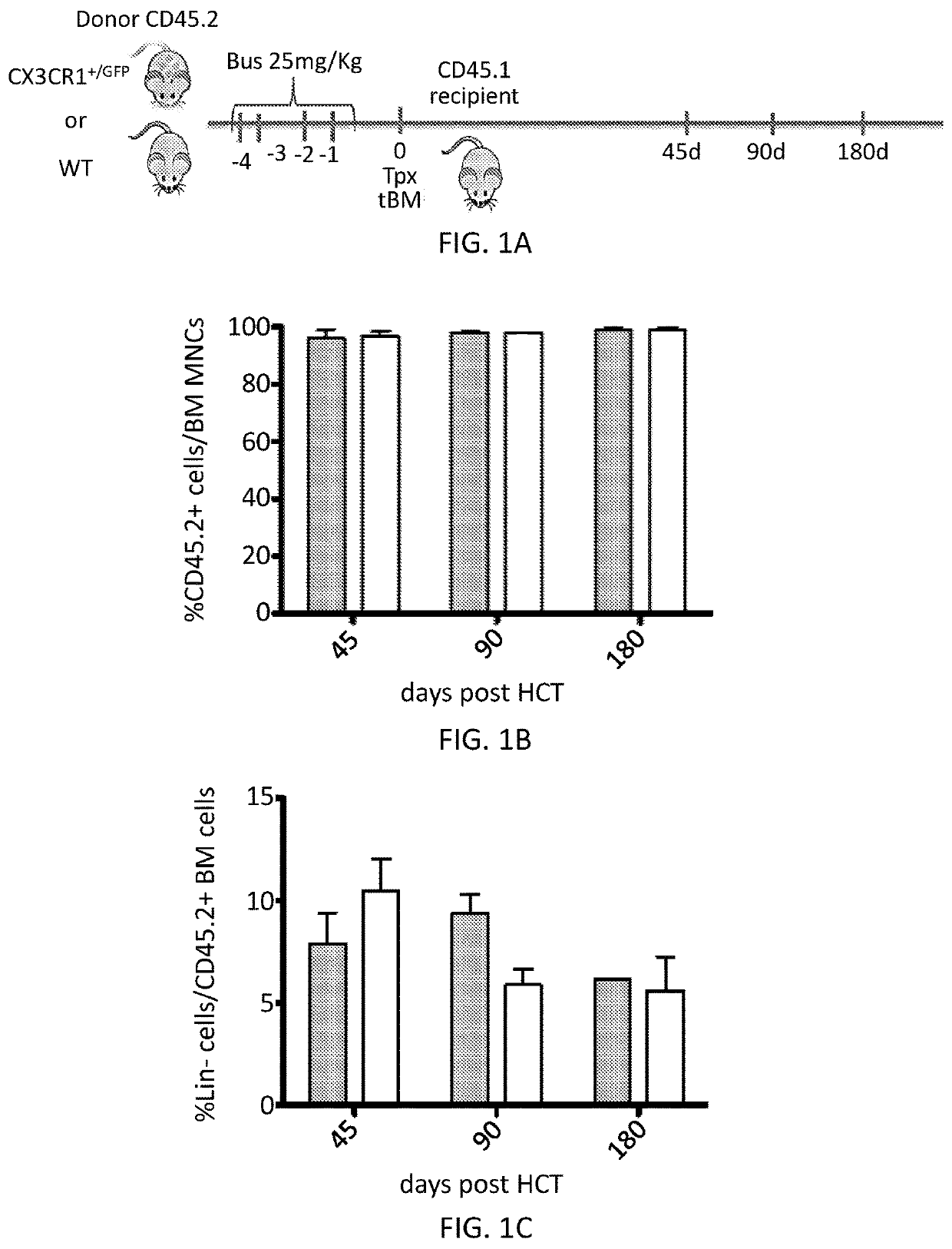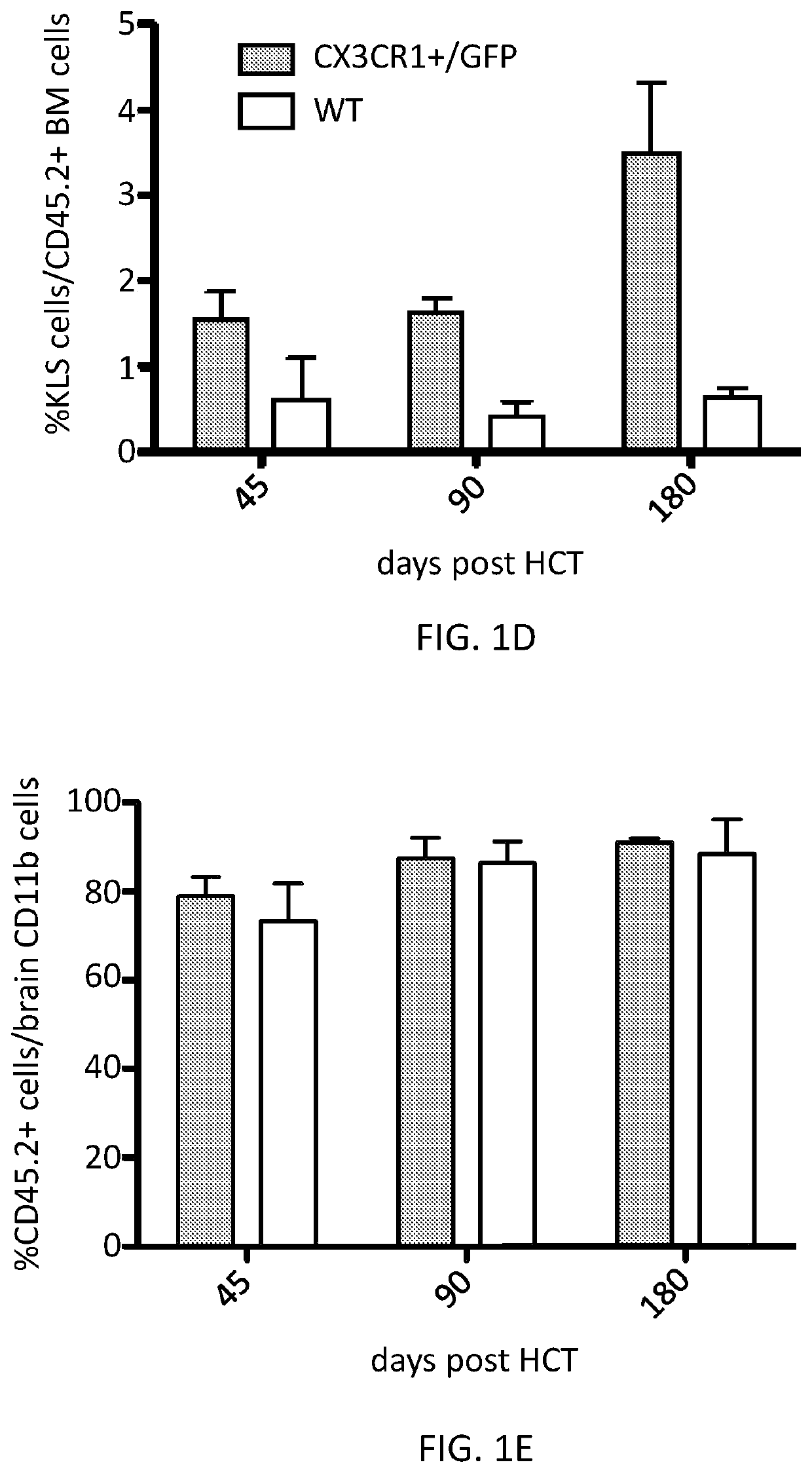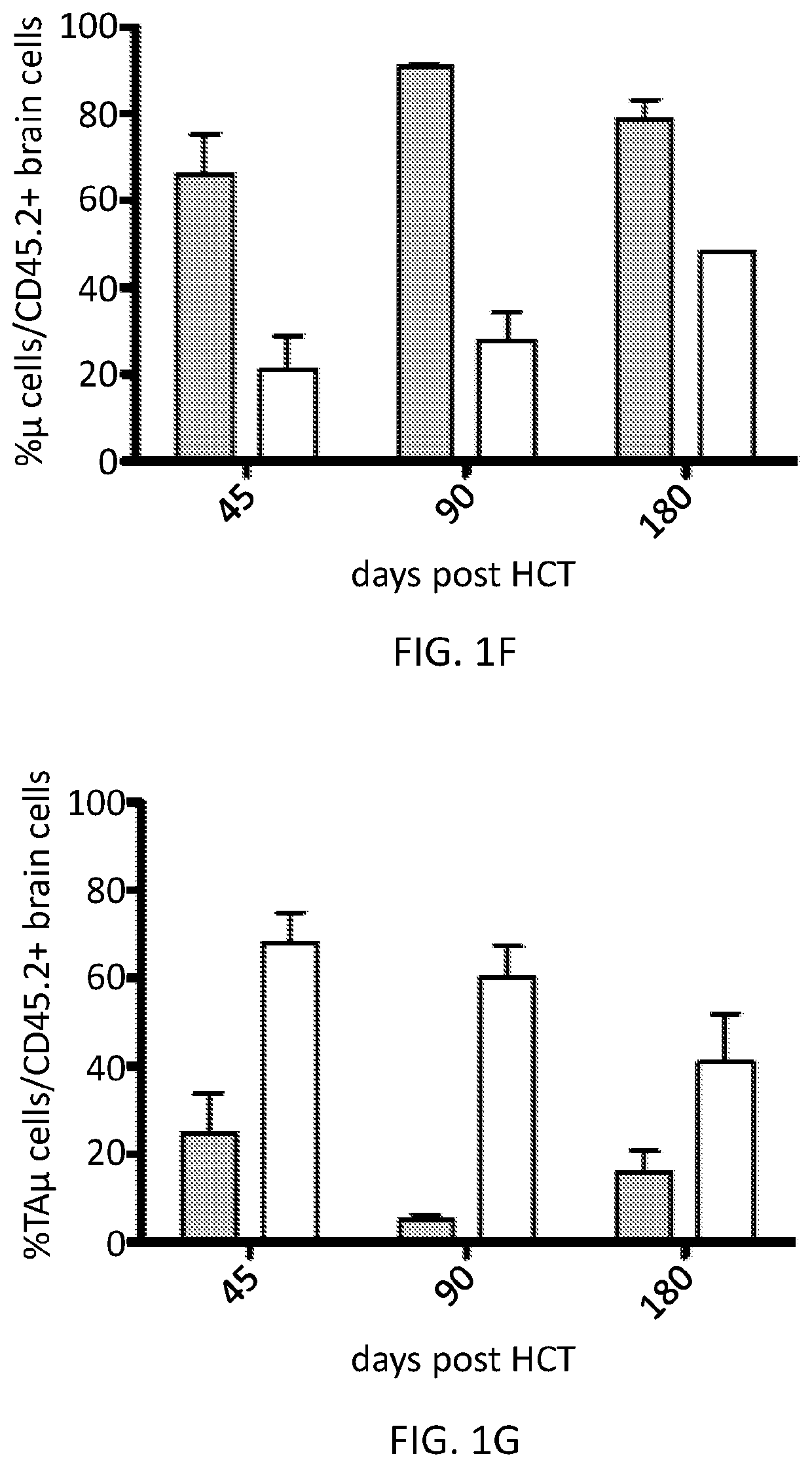Methods and compositions for reconstituting microglia
a microglia and composition technology, applied in the direction of drug compositions, peptides/protein ingredients, peptides, etc., can solve the problem that the approach for neurological and metabolic diseases has not been widely adopted
- Summary
- Abstract
- Description
- Claims
- Application Information
AI Technical Summary
Benefits of technology
Problems solved by technology
Method used
Image
Examples
example 5
t the CX3CR1 Locus in Human HSPCs
[0133]A targeted gene addition approach is being designed to insert at least one gene at the CX3CR1 locus in human HSPCs and their progeny that will be expressed in their microglia-like progeny upon engraftment. Haploinsufficiency at this locus upon targeted therapeutic gene addition may also confer to the edited HSPCs a repopulation and maturation advantage over wild type cells.
[0134]Different guides are being tested for specificity of targeting and reducing CX3CR1 expression in CD34+ human HSPCs. The population of CD34+ cells to be infused is being characterized by Tracking of Indels by DEcomposition (TIDE) analysis for evaluating the distribution of haploinsufficient, knockout, and wild type cells. Edited cells are being characterized for the expression of CX3CR1 by flow cytometry and for their ability to engraft into the CNS of immune-deficient mouse recipients.
Other Embodiments
[0135]From the foregoing description, it will be apparent that variat...
PUM
| Property | Measurement | Unit |
|---|---|---|
| Composition | aaaaa | aaaaa |
| Therapeutic | aaaaa | aaaaa |
Abstract
Description
Claims
Application Information
 Login to View More
Login to View More - R&D
- Intellectual Property
- Life Sciences
- Materials
- Tech Scout
- Unparalleled Data Quality
- Higher Quality Content
- 60% Fewer Hallucinations
Browse by: Latest US Patents, China's latest patents, Technical Efficacy Thesaurus, Application Domain, Technology Topic, Popular Technical Reports.
© 2025 PatSnap. All rights reserved.Legal|Privacy policy|Modern Slavery Act Transparency Statement|Sitemap|About US| Contact US: help@patsnap.com



